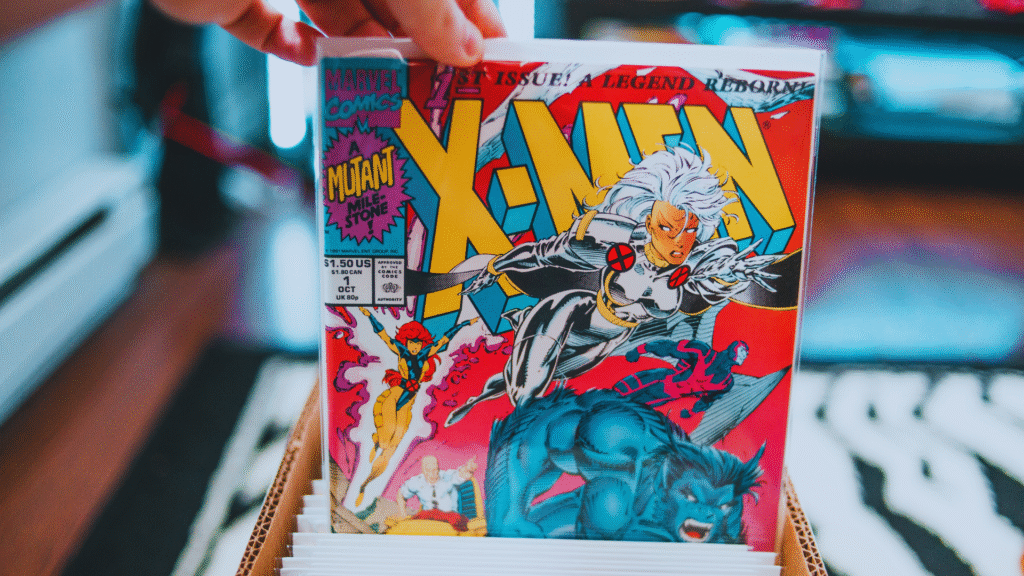Superhero comics have undergone significant transformation since their inception in the late 1930s. From the rise of iconic characters like Superman and Batman to the emergence of more complex narratives and diverse representations, the medium reflects societal changes and evolving cultural values. The evolution of superhero comics illustrates how they adapt to the times, addressing contemporary issues while continuing to capture the imagination of readers.
In the early years, superhero stories primarily focused on straightforward good versus evil themes. As decades progressed, they began to incorporate intricate plots, moral dilemmas, and character development, resonating more deeply with audiences. This shift has allowed for the exploration of varied genres within the superhero framework, showcasing everything from dark, gritty tales to light-hearted adventures.
Today, superhero comics feature a wide array of characters that reflect a broader spectrum of identities and experiences. This inclusivity not only enhances storytelling but also fosters a stronger connection with a diverse readership. Understanding this evolution provides insight into the enduring popularity and relevance of superhero comics in modern culture.
Origins and Golden Age of Superhero Comics
The origins of superhero comics can be traced back to early 20th-century pulp fiction, leading to the emergence of iconic characters that shaped the genre. This period saw the introduction of legendary heroes, setting the stage for an industry that would captivate readers for decades.
Pulp Heroes and Early Inspirations
Before superhero comics, pulp magazines featured adventurous characters such as The Phantom and Doc Savage. These heroes often embodied ideals of justice and bravery, laying the groundwork for future superheroes.
The stories were filled with action and moral lessons, engaging readers and providing an escape into fantastical worlds. This medium not only entertained but also inspired a new generation of creators eager to innovate in the comic book format.
The Creation of Superman and Batman
The birth of Superman in 1938 by Jerry Siegel and Joe Shuster marked a pivotal moment. This character, presented in Action Comics #1, introduced the archetype of superhuman abilities coupled with a moral compass.
Following closely, Batman emerged in 1939, created by Bob Kane and Bill Finger. Unlike Superman, Batman utilised intellect and combat skills rather than superpowers, appealing to those who favoured a darker narrative. Both characters became symbols of their time, influencing countless others throughout the Golden Age.
The Rise of Detective Comics and Early Marvel
During the Golden Age, Detective Comics played a crucial role in popularising superheroes. The anthology format allowed multiple stories and characters to thrive, including Batman and other emerging heroes.
Simultaneously, Marvel Comics began making waves, with characters like the Human Torch captivating audiences. With the introduction of Captain America in 1941, created by Joe Simon and Jack Kirby, the company offered a patriotic hero amidst World War II narratives. This period solidified superhero comics as a dominant cultural phenomenon, engaging a wide readership.
The Silver and Bronze Ages: Expanding the Genre
During the Silver and Bronze Ages of comics, significant developments transformed the landscape of superhero storytelling. Iconic characters and teams emerged while publishers began experimenting with more complex narratives and themes. This era also saw the establishment of industry standards and the evolving role of comic book creators.
Introduction of Iconic Characters and Teams
The Silver Age, starting in the late 1950s, introduced seminal characters such as Spider-Man, created by Stan Lee and Steve Ditko. This hero’s relatability and personal struggles brought a new depth to the genre. At the same time, the Avengers, formed by Marvel, showcased teamwork among heroes.
DC Comics revitalised its universe with heroes like Green Lantern and the Flash, thanks to the efforts of Julius Schwartz. The introduction of the X-Men in 1963 demonstrated how comics could tackle social issues, such as prejudice and acceptance. These characters redefined what a superhero could represent.
Influence of Marvel and DC
Marvel’s rise in the 1960s marked a pivotal shift in comic book storytelling. The consequential narratives created by writers like Stan Lee and artists such as Jack Kirby brought characters to life in a way that resonated with readers. The combination of superhero mythology and everyday problems established a relatable framework.
Conversely, DC focused on its legacy characters, increasing their complexity and depth. The partnership of Neil Adams and Denny O’Neil redefined characters like Batman and Green Lantern, introducing darker themes and moral conflicts. This rivalry between Marvel and DC fuelled a competitive atmosphere that spurred creativity and innovation.
The Role of the Comics Code Authority
The Comics Code Authority (CCA) established in 1954 significantly influenced content. It imposed restrictions on depictions of violence, horror, and other adult themes, forcing creators to adapt their storytelling. Despite these limitations, writers found ways to explore relevant issues subtly.
For example, the portrayal of the dynamic duo, Batman and Robin, shifted towards more wholesome adventures due to CCA guidelines. However, some creators, including those at Marvel, began to push boundaries within the constraints, ultimately leading to the CCA’s decline and more expansive storytelling.
Innovations in Storytelling and Art
The artistry and storytelling techniques of the Silver and Bronze Ages advanced significantly. Artists like Neal Adams introduced a more realistic style, enhancing character expressions and emotions. This evolution helped lift narratives, making them more compelling.
Additionally, the storytelling format evolved. Multi-issue arcs, cliffhangers, and crossovers became standard, allowing complex plots to unfold over time. Titles such as Swamp Thing explored themes of ecology and identity, pushing the boundaries of traditional superhero narratives. This era paved the way for future developments in comics as a medium.
The Modern Age: Darker Themes and Industry Transformation
The Modern Age of superhero comics, beginning in the mid-1980s, marked a significant shift towards darker narratives and complex characterisations. This era introduced a blend of gritty storytelling and transformative industry practices that reshaped the comic landscape.
Rise of Grim and Gritty Storytelling
The emergence of grim and gritty storytelling became prominent with seminal works such as The Dark Knight Returns by Frank Miller and Watchmen by Alan Moore. These narratives deconstructed the superhero archetype, presenting flawed characters who grapple with moral ambiguity.
In The Dark Knight Returns, an older Bruce Wayne faces a dystopian Gotham City, challenging traditional notions of heroism. Similarly, Watchmen explores the psychological and sociopolitical ramifications of vigilante justice. Both series introduced a realism that resonated with readers, steering the genre into darker territories.
Critical Works and Creators
Key creators like Alan Moore and Frank Miller played pivotal roles in this transformation. Moore’s Swamp Thing and Miller’s Elektra: Assassin pushed boundaries with mature themes and intricate narratives. Their works often addressed societal issues, including addiction and trauma.
The industry responded to this trend with a focus on storytelling that prioritised depth and character development over iconic battles. Comics began to reflect real-world concerns, providing a more relatable and nuanced experience for readers. This period cemented the importance of creators’ artistic visions in defining the future of the medium.
The Impact of Major Events and Crossovers
Major crossover events such as the Crisis on Infinite Earths and Identity Crisis significantly impacted the industry. Crisis on Infinite Earths aimed to simplify continuity issues and introduced new storytelling possibilities that altered character dynamics.
Follow-up events like Infinite Crisis and Identity Crisis explored darker themes, including betrayal and the consequences of power. These narratives prompted deeper character exploration, shifting focus from purely heroic deeds to the implications of those actions.
The rise of iconic characters like Ghost Rider and depictions of kryptonite as a symbol of vulnerability exemplified this trend. The industry’s transformation into a narrative-driven model attracted new readers while retaining seasoned fans, solidifying the Modern Age’s influence on comic books.
Superheroes Beyond the Page: Multimedia and Cultural Impact
Superheroes have transcended their comic book origins, reaching new heights in film, television, and broader cultural narratives. This expansion showcases their significance in modern media and society.
The Cinematic Evolution of Superheroes
The superhero film genre transformed dramatically over the decades, beginning with low-budget productions like Howard the Duck and evolving into major blockbusters. Tim Burton’s Batman (1989) set the tone for darker, more complex narratives.
Christopher Nolan’s The Dark Knight trilogy redefined superhero storytelling by exploring moral ambiguity and realism. The success of this trilogy paved the way for the Marvel Cinematic Universe, starting with Iron Man (2008), which established a cohesive narrative across multiple films. Today, superhero films dominate Hollywood, with an emphasis on significant box office returns and franchise potential.
Transition to Television and Streaming
Television has played a crucial role in the superhero genre, from early adaptations like The Adventures of Superman to modern series on streaming platforms. Shows such as The Flash and Jessica Jones expanded upon their cinematic counterparts, providing deeper character exploration.
Services like Netflix and Disney+ capitalised on the superhero craze, offering exclusive content like Daredevil and WandaVision. These platforms allowed for innovative storytelling methods, showcasing diverse narratives and characters, including lesser-known heroes like Shazam and Captain Marvel. This shift has broadened audiences’ understanding of the superhero mythos.
Influence on Popular Culture and Society
Superheroes have significantly impacted popular culture, influencing literature, art, and fashion. Comics like Maus by Art Spiegelman have elevated the medium, showcasing its potential for serious narrative.
The integration of superheroes in various media reflects societal values and issues. For instance, characters from Archie Comics and the broader multiverse concept highlight themes of identity and inclusion. As heroes navigate challenges related to society, their stories resonate with audiences, addressing contemporary dilemmas and celebrating heroism in everyday life.

